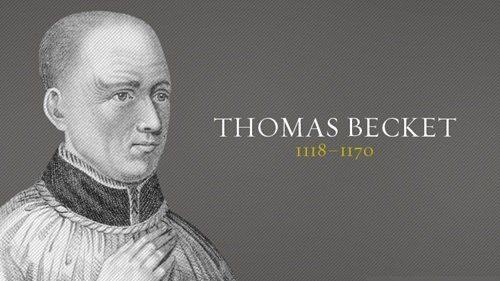
Thomas Becket was born in 1119 in London. Thomas’s successful parents made sure that their son was well educated and brought up with all the best. Archbishop Theobald of Bec noticed Becket’s talents and good standing. Archbishop Theobald of Bec quickly chose Thomas to be one of his clerks. Becket impressed Theobald so much that the archbishop chose Becket to go on several missions to Rome. About the time of Theobald passing, the throne of England was seizing upon a new king, who would become Henry II. This new king took the English crown as Henry II, who had also noticed the talents of Thomas. The king made Thomas one of his clerks, and soon he became the most favored. The king soon appointed Thomas as Lord Chancellor in 1155. They became very good friends and would go on hunting trips and other excursions together. When Theobald died, Thomas was the obvious choice to be the new archbishop. After all, the king felt that this new archbishop would continue to support the state, as he had done in the past.
Since Thomas had already been ordained as a deacon and as a priest, the next step would be archbishop. In 1162, a council of bishops and noblemen met to nominate and later to elect Thomas to the high position of Archbishop of Canterbury. As archbishop, Becket resigned his role as Lord Chancellor and began focusing more on spiritual matters. The new archbishop appeared to turn his back on the king as he sought to extend the rights and privileges of archbishops and the church. The king must have thought that the archbishop actually had the nerve to speak up for the church. It appeared that the new archbishop went on his way to drain the swamp, so to speak. The archbishop would generally excommunicate his opponents within the church. At one point, three clergymen were excommunicated because of their breach of coronation privileges. After so many other excommunications, along with the other disagreements, the king had just about enough. From that time forward, it was heavily rumored that the king was out to take the archbishop’s life.
On December 29, 1170, four knights confronted the archbishop, no doubt sent from the king. Initially, the knights appeared to reason with the archbishop that it would be wise to come back to the side of the king and the state. When rhetoric came to no avail, the knights took the life of Becket. Surprisingly to some, when the body was being prepared for burial an undergarment was discovered. This undergarment was termed a “hairshirt,” or better known as sackcloth. This was a self-imposed burden on the wearer that repentance had been made. This caused veneration to to paid toward Becket from the citizenry. Becket was being praised already as a saint. He would forever be remembered as a martyr. In 1173 Pope Alexander III canonized Thomas Beceket as a saint. Becket’s murder had assured his canonization. The king would even pay penance at the tomb of Becket.
Many legends arose after the death and canonization of Thomas Becket. My favorite one has to do with the people of Strood, who would be born with tails. It had happened that the men of Strood had sided with the king against Becket and at one time had cut off the tail of Becket’s horse.
In 1220 Becket’s bones were transferred to Trinity Chapel in Canterbury Cathedral, which later became a favorite religious pilgrimage for English Christians.
Congratulations @wiseosagie! You received a personal award!
Click here to view your Board
Congratulations @wiseosagie! You received a personal award!
You can view your badges on your Steem Board and compare to others on the Steem Ranking
Vote for @Steemitboard as a witness to get one more award and increased upvotes!